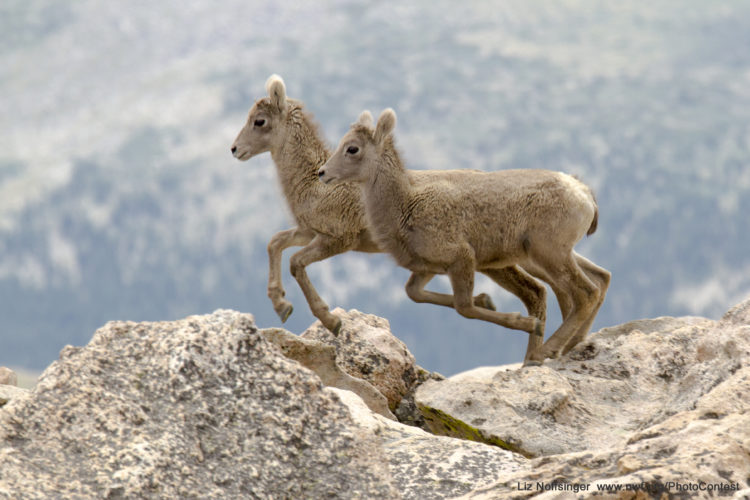5 Endangered Species That Depend On Public Lands

These places we love are all of those things, but they are also places created to protect and restore wildlife. Our national parks, wildlife refuges and other wild public lands provide crucial habitat for wildlife, and especially endangered species. In celebration of National Wildlife Refuge week this week, let’s take a look at some of the species living on these special lands.
The National Wildlife Federation is part of a coalition of more than 40 outdoor and sportsmen’s organizations calling upon candidates seeking public office this November to pledge to protect our public lands and the wildlife that call these places home. Thousands of friends of wildlife have already pledged to protect our wild public lands and the native wildlife – and urged candidates and politicians to do the same.
Endangered species don’t have representatives in Congress: they need you to speak for them. Take action and ask political leaders and candidates to pledge to protect our public lands!
Meet five of the many incredible endangered species and the public lands they call home.
Black-Footed Ferret

Photo by Mike Lockhart/USFWS.
This medium-sized ferret is the only ferret species native to North America. Once widespread across western grasslands, these playful creatures are unfortunately now one of the most endangered mammals on our continent. By the 1970s, scientists believed black-footed ferrets to be extinct, but a tiny population was discovered near a small town in Wyoming in the 1980s. Herculean captive breeding and recovery efforts by the U.S. Fish and Wildlife Service, and other conservation partners have brought these ferrets back from the brink. Our public lands are still some of the only places where these animals have a chance of recovery.
Where to see them: Rocky Mountain Arsenal National Wildlife Refuge in Colorado and UL Bend National Wildlife Refuge in Montana.
Whooping Crane

Photo by Billrdio/flickr.
These graceful cranes are the tallest birds in North America, with males approaching 5 feet tall when standing erect. Named for their striking calls, whooping cranes historically migrated between breeding grounds in Canada and northern Wisconsin and wintering grounds on the coast of Texas and Florida. Sadly, the population of whooping cranes dwindled to just 16 birds in 1941. Extensive recovery efforts, involving captive breeding programs, have helped the whooping crane endure, but as of February 2015, the population still only totaled 603 individuals. Populations have been reintroduced at national wildlife refuges in Texas, Wisconsin, and Florida.
Where to see them: Aransas National Wildlife Refuge in Texas and Necedah National Wildlife Refuge in Wisconsin.
Sierra Nevada Bighorn Sheep

Photo by Liz Noffsinger, National Wildlife photo contest entrant.
These majestic animals are a subspecies of bighorn sheep unique to Sierra Nevada Mountains of California. These sheep have specialized hooves to help them easily navigate treacherous slopes and terrain. By 1995, only 100 individuals remained. Thanks to the work of the U.S. Fish and Wildlife Service, the California Department of Fish and Wildlife, and the Sierra Nevada Bighorn Sheep Foundation the populations rebounded to over 600 by 2014. The regions crucial to their recovery are almost entirely national public lands, including two national parks, four national forests, and Bureau of Land Management lands.
Where to see them: Sequoia and Kings Canyon National Park in California, and Inyo National Forest in California.
Piping Plover

Photo by Amanda Boyd/USFWS
The piping plover is a sparrow-sized shorebird named for its melodious vocalizations. Weighing no more than two ounces, the piping plover migrates between southern Canada and parts of the Carolinas, and is found along the Atlantic Coast and the Great Lakes. By 1983, the Great Lakes population of piping plovers was down to about 12 breeding pairs, leading to listing as a federally endangered species in 1986. Other populations along the Atlantic have been listed as federally threatened as well. National wildlife refuges and national lakeshores and seashores have been crucial to protecting the piping plover’s habitat, along with extensive public education programs.
Where to see them: Sleeping Bear Dunes National Lakeshore in Michigan and Cape Code National Seashore in Massachusetts.
Hawaiian Monk Seals

Photo by Andy Collins/NOAA
One of the rarest marine mammals in the world, Hawaiian monk seals are unique to the Hawaiian Islands. These playful seals weigh anywhere between 300 and 600 pounds, with a slender, torpedo-shaped body. Officially designated as an endangered species in 1976, the population still remains at only 1,100 individuals. Most of the population of Hawaiian monk seals lives within the protected boundaries of Papahānaumokuākea Marine National Monument, designated in 2006 and expanded in 2016.
Where to see them: Midway Atoll National Wildlife Refuge in Hawaii, which is part of Papahānaumokuākea Marine National Monument.
These are only five of the thousands of threatened and endangered species reliant on our nation’s public lands. Whether their habitat is primarily found on a wildlife refuge, a national park or forest, or other wild public lands the sale or transfer or our public lands could be devastating for some of the most vulnerable wildlife in the United States.
With only weeks to go before the November election this is an issue too important to ignore. Urge our political leaders and candidates to pledge to protect our wild public lands.
Take Action
Source: Public Lands





